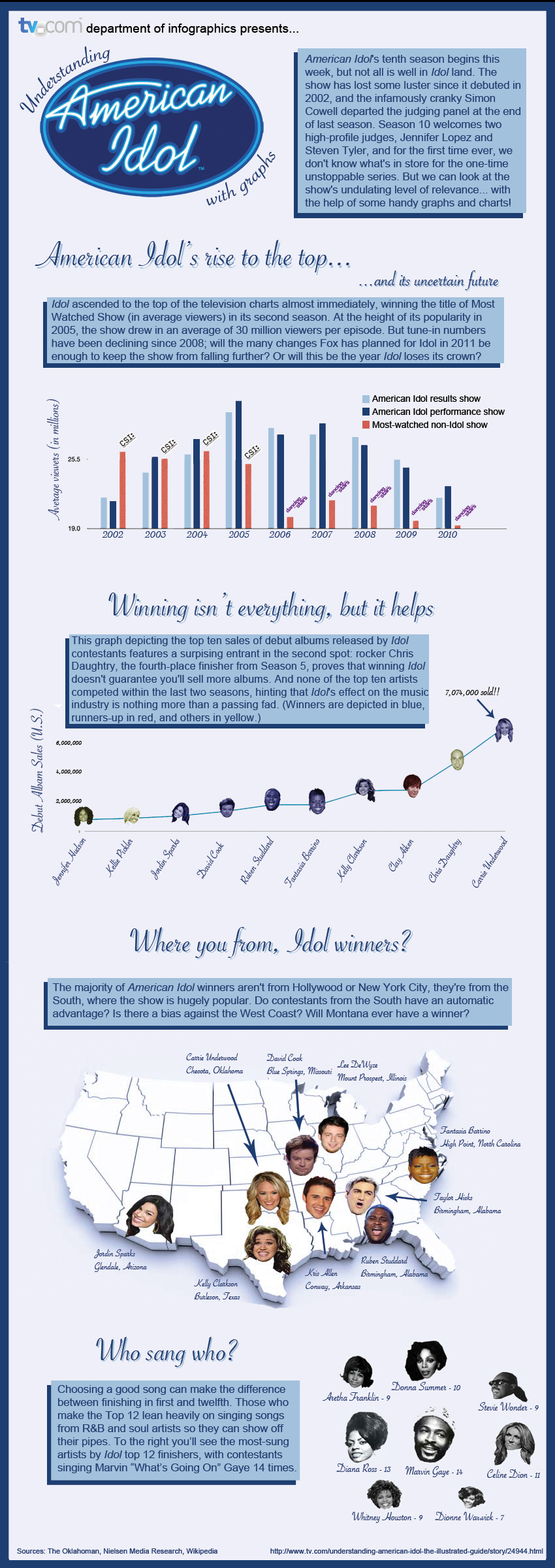Although American Idol was officially canceled on May 11, 2015, it is still important to look at the demographics that were attracted to this award winning show. For 8 consecutive years beginning in 2003-2004, this series was ranked #1 in US television ratings.
The average median age of a view of American Idol was consistently above 40 years of age.
Most networks want to target the 18-49 key age demographic because this is where the most money tends to be spent. What is unique with American Idol is that as the show progressed, the average age actually got older as the show experienced more success. In season 1, the average age of the audience was just 31.
What is Unique About the 18-49 Age Demographic?
- CBS won the network ratings war for the 18-49 key demographic in 2012, the first time in 20 years, even though the average age of their viewers was 56.
- In 2002, the 18-49 age demographic represented 62% of all adults. As Baby Boomers continue to age, that figure has dropped to just 55% today.
- 82% of the age demographic aged 24 or younger live in the home of someone else.
- In the last two decades, network television has seen a drop in viewership of 5% on average annually.
- People in the 18-34 part of this age demographic are increasingly watching television online instead of when it is aired live.
More people in the American Idol demographics are still living at home with their parents. This includes adult children up to the age of 34. The network television model that looks to target this key demographic isn’t dead, but it does need to evolve if it is going to survive. As people look for other ways to watch TV, producers and advertisers must move with their viewers in order to generate the 30 million viewers per night that American Idol was able to generate at its peak levels of success.
The Economic Impact of the American Idol Demographics
- 61% of the 18-49 age demographic have attended some level of higher education.
- 15% of people in the 18-34 portion of the American Idol demographics were born in a foreign country before moving or immigrating to the USA.
- About 75% of this key demographic has a profile on at least one social networking website.
- Nearly 50% of the American Idol demographics say that it is important for them to live near family and friends.
- In 1965, the average amount of time a father spent with his children was just 2.5 hours per day. In 2011, fathers within the American Idol demographic were spending 7.3 hours per day with their children.
Family is more important than ever before. There is a certain closeness that the American Idol demographic feels for their family and friends that is greater than in generations past. This means producers and advertisers only need to win over one family member or friend to be able to have prospects with that person’s closest circles. It also means that negative feelings can quickly spread. It is facts like this that caused the show to shed 22 million total viewers from its peak of popularity to its final seasons.
Interests Are Shifting In The American Idol Demographics
- Only 12% of women who receive a college/university degree today took an education major. This is down from 35% in the 1970s.
- Business degrees have nearly doubled within this core demographic in the last three decades.
- Total student outstanding loan debt surpassed $1 trillion by the end of the second quarter of 2014, making it the second largest category of household debt.
- 90% of those in the American Idol demographic are either actively looking for work, are working, or are enrolled in school at some level.
- From 2013-2014, the unemployment rate in this demographic lowered by 1.8%.
- Median real hourly wages for 21 to 25 year-old college graduates are even higher than median real hourly wages for 26 to 34 year-old non-college graduates.
The lesson to be learned here is that those in the American Idol demographics with a college education are more likely to have more money to spend. Education is a good investment, but slow wage growth is still a problem which must be addressed. American Idol succeeded because it allowed people within their core demographics to pursue a dream. With the message of the show never really evolving and no breakout superstars appearing for a number of years, we can also glean a second lesson: without evolving a marketing message to any demographic, a business will flounder and eventually die.

Although millions of people visit Brandon's blog each month, his path to success was not easy. Go here to read his incredible story, "From Disabled and $500k in Debt to a Pro Blogger with 5 Million Monthly Visitors." If you want to send Brandon a quick message, then visit his contact page here.
